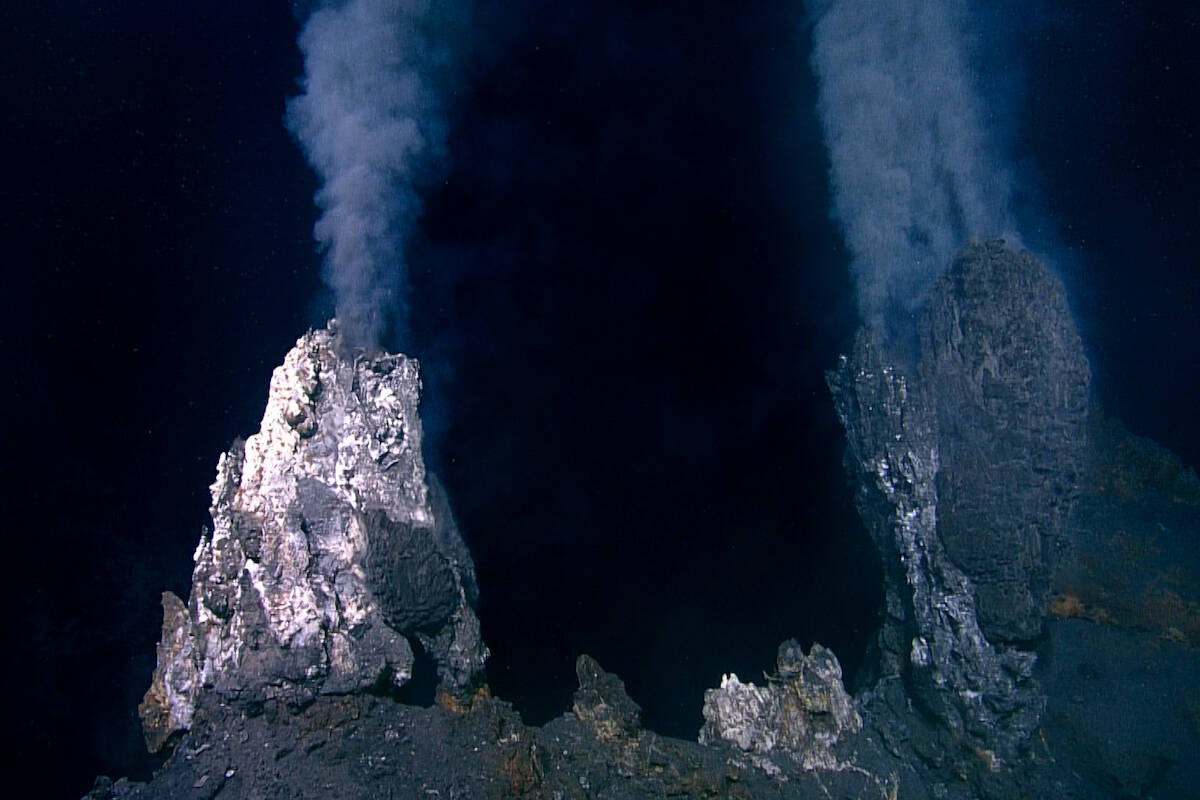An eruption of magma under the Pacific Ocean floor far off Vancouver Island will be so hot the water will fizz but only scientists will notice.
Scientists with Ocean Networks Canada are predicting an eruption is coming anywhere from a few weeks to a few years from now after they detected up to 200 small earthquakes per hour in the area last week.
They say the expected rupture – about five kilometres deep and 260 kilometres off the coast of Tofino, on the west coast of Vancouver Island – will be too distant and small to be cause for concern.
However, it offers a unique opportunity to learn more about how the Earth’s crust is formed.
Martin Scherwath, a senior scientist with the organization, said it will be the first chance for the phenomenon to be captured by the network’s underwater instruments.
The Neptune observatory has been collecting data from the site since equipment was first installed in 2009.
“So, this is the first time where a cable network observatory (has been) there all the time, and we actually have a chance to realize what’s happening,” Scherwath said.
He said the Earth’s crust doesn’t build slowly over time, but rather develops through this type of burst of cooled magma that was last recorded about 20 years ago.
“There will be a major spreading event, and we want to know exactly how much is it spreading, how much new ocean crust it is generating, (and) how fast,” he said.
Ocean Networks Canada says the observatory has seen increased earthquake activity in the area known as the Endeavour segment of the Juan de Fuca Ridge for years, but that peaked on March 6, when it recorded the highest level of earthquake activity in nearly two decades.
“What happened last week was just really outstanding in comparison (with) the gradual increase that we have seen,” Scherwath said.
“So, there might have been a few a day on average, but 200 is an outstanding number.”
During the last eruption 20 years ago, scientists only had seismometers on the ocean floor to collect information about the earthquakes.
This time, data will be collected in almost real time and include additional equipment to measure temperature changes, or any sound from lava breaching the sea floor.
The magma is estimated to be about 800 degrees Celsius but will cool rapidly when it hits the ocean water.
Scherwath said “almost fluid, runny rock” will come out of the sea floor, solidify and quickly turn black, while the heat causes the water around it to fizz.
He said he and fellow geophysicists will be watching to see how much of the Earth’s crust is formed with one eruption, while biologists will be most interested in how animals respond to any changes.
READ ALSO: Tonga volcano blast was unusual, could even warm the Earth
READ ALSO: Expedition explores supervolcanoes and deep-sea firsts in B.C. waters

